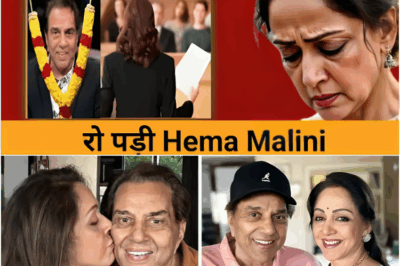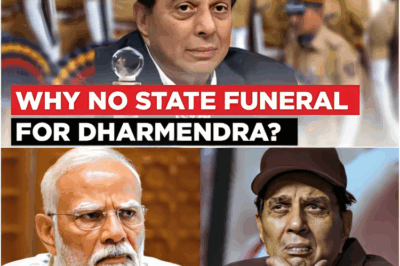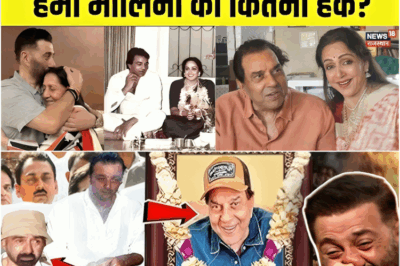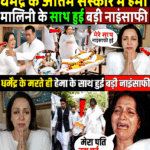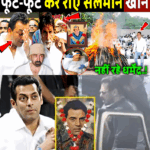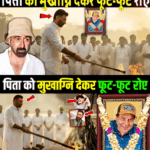Videos targeting Himanshi Narwal spark outrage, public demand for CBI investigation intensifies on Instagram, leaving people shocked.
.
.
Tragedy, Trolling, and Truth: The Ordeal of Himanshi Narwal After the Pahalgam Attack
On April 22, 2025, a brutal terrorist attack shook Pahalgam, Jammu and Kashmir, leaving the nation grieving. Among the victims was Indian Navy officer Lieutenant Vinay Narwal, who lost his life in the line of duty. What should have remained a private moment of mourning for his family quickly turned into a firestorm on social media. His newlywed wife, Himanshi Narwal, found herself at the center of controversy not for her loss, but for a statement she made days later.
This article explores the unfolding of events, the online hate Himanshi faced, the questionable assumptions made by internet users, and the broader conversation about national integrity, identity, and digital ethics.
A Tragic Loss in Pahalgam
The terror attack in Pahalgam claimed many innocent lives, including that of Lieutenant Vinay Narwal, a young officer who had recently married Himanshi Narwal. The attack, believed to be planned and executed by Pakistani-backed terrorists, targeted a tourist area, causing national outrage and intense mourning.
Vinay’s bravery was praised across media outlets and political circles. However, as is often the case in the age of social media, the narrative quickly moved beyond the victim to those left behind — especially Himanshi.

Himanshi Narwal’s Statement and Its Fallout
On May 1, Vinay’s birthday, Himanshi made a public statement. Still in mourning, she urged the public not to generalize or blame Kashmiris and Muslims for the act of terrorism. “Please don’t target Kashmiris or Muslims,” she said, advocating for peace, unity, and a fair investigation.
Rather than being embraced as a voice of reason, her words sparked a storm of criticism. Many accused her of being “anti-national” and even sympathizing with terrorists. Some users went as far as calling her a supporter of Pakistan-based extremists, simply because she called for communal harmony and fairness in judgment.
Her message, which aimed to prevent the spread of hate, was twisted by online trolls who questioned her patriotism, loyalty, and even her character.
Rising Conspiracy Theories and Calls for CBI Investigation
Shortly after the statement, conspiracy theories began to emerge on social media. Himanshi’s Instagram profile came under scrutiny. Screenshots of her following list were circulated widely, pointing out that she followed some accounts from Pakistan or accounts that posted about Kashmir. This was used as supposed “evidence” to suggest that she had sympathies or links with Pakistan.
Several social media users even began demanding a CBI (Central Bureau of Investigation) probe into her actions, hinting that she might have had some connection to the attack itself — a claim that has no credible foundation.
The accusations grew more absurd. Some questioned how Himanshi, who had just lost her husband a week earlier, could be active on Instagram or respond to follow requests. They claimed that such behavior was “suspicious” and “unnatural,” ignoring the fact that grief manifests differently for everyone.
A Viral Photo and More Speculation
Adding fuel to the fire, an old photo of Himanshi with a young man surfaced online. Trolls claimed that the man in the photo was a Kashmiri Muslim and implied that Himanshi had a past or ongoing relationship with him. This baseless assumption was then connected to her refusal to blame all Kashmiris for the attack.
Again, there was no evidence to suggest that the person in the photo had any link to the Pahalgam incident or to Himanshi’s personal life in the present. No official source confirmed the identity of the man or the context of the photograph. Still, the damage was done, and Himanshi was painted as a traitor by many on the internet.
The Pressure of Public Opinion
For a young widow grappling with sudden loss, the burden of facing online hatred and baseless allegations is overwhelming. Instead of finding solace or empathy, Himanshi was subjected to a digital witch-hunt.
Critics not only questioned her character but began to draw links between her social media activity and national security, creating a narrative that had no grounding in fact. In a country where emotions often run high in the aftermath of national tragedy, the distinction between justice and mob mentality can sometimes blur.
Grief and Its Many Faces
People grieve in different ways. For some, silence and solitude help; for others, speaking out becomes a way of healing. Himanshi Narwal chose to speak, not to draw attention to herself, but to appeal to the nation’s better judgment — to remind people that in pain and loss, we must not lose our humanity.
The rush to blame and shame her reveals a darker side of social media culture: the readiness to condemn without evidence, the thirst for scapegoats, and the toxic desire to turn personal tragedy into national spectacle.
A Dangerous Precedent
The trolling of Himanshi Narwal has set a dangerous precedent. If someone who loses a loved one in a terror attack is not even allowed to mourn in peace without being accused of betrayal, then as a society, we must question our collective moral compass.
Her appeal for peace was not an act of rebellion. It was an act of courage. In the face of hatred, she chose compassion. In the face of loss, she chose unity. And for that, she paid a high price — not from the terrorists who killed her husband, but from her fellow citizens who refused to understand her.
What We Should Be Asking
Rather than demanding a CBI inquiry into Himanshi Narwal, we should be asking:
Why are baseless accusations so easily spread and accepted online?
What responsibility do social media platforms have in stopping the spread of hate and disinformation?
How can we better protect the dignity and rights of victims and their families in the aftermath of national tragedies?
PLAY VIDEO:
Conclusion
Himanshi Narwal’s story is not just about one woman’s grief. It is a reflection of a society struggling to balance emotion with reason, patriotism with compassion, and justice with empathy. She stood up in a moment of darkness and asked the nation to rise above hate. Whether or not people listened is still up for debate.
News
धर्मेंद्र की वसीयत का खुलासा: वकील ने सच बताया तो हेमा मालिनी फूट-फूटकर रो पड़ीं 😢
धर्मेंद्र की वसीयत का खुलासा 📜: वकील ने सच बताया तो हेमा मालिनी फूट-फूटकर रो पड़ीं 😢 . धर्मेंद्र, भारतीय…
धर्मेंद्र के निधन पर: पद्म भूषण अभिनेता के लिए राज्य सम्मानित अंतिम संस्कार से देओल परिवार ने दूरी क्यों बनाई?
धर्मेंद्र का निधन: देओल परिवार ने क्यों चुना राजकीय सम्मान से दूर रहना? बॉलीवुड ने हाल ही में अपने एक…
Dharmendra Passes Away: क्या हेमा मालिनी को मिलेगा हिस्सा? सनी देओल की क्या भूमिका? |
भारतीय सिनेमा के दिग्गज अभिनेता धर्मेंद्र का हाल ही में निधन हो गया, जिससे उनके परिवार और प्रशंसकों में गहरा…
Dharmendra ji के आखिरी वक्त में क्या हुआ था अब deol family के नौकर ने किया बड़ा खुलासा
Dharmendra ji के आखिरी वक्त में क्या हुआ था अब deol family के नौकर ने किया बड़ा खुलासा . …
शादीशुदा होकर भी ताउम्र ‘अकेली’ क्यों रहीं हेमा मालिनी | Dharmendra And Hema Malini Story
शादीशुदा होकर भी ताउम्र ‘अकेली’ क्यों रहीं हेमा मालिनी | Dharmendra And Hema Malini Story . . हेमा मालिनी और धर्मेंद्र: एक अनकही प्रेम कहानी क्या एक औरत के…
Dharmendra Death News : गुपचुप क्यों हुआ धर्मेंद्र का अंतिम संस्कार, जानकर चौंक जाएंगे
Dharmendra Death News : गुपचुप क्यों हुआ धर्मेंद्र का अंतिम संस्कार, जानकर चौंक जाएंगे . धर्मेंद्र का निधन: गुपचुप अंतिम…
End of content
No more pages to load

